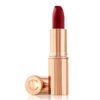Exfoliation is a vital step in any skincare routine, as it helps remove dead skin cells, unclog pores, and promote cell turnover, leading to healthier and radiant skin. By incorporating exfoliation into your regimen, you can achieve a smoother complexion, improve skin texture, and enhance the effectiveness of other skincare products. However, it’s crucial to understand the different methods and steps of skin exfoliation to avoid potential damage and irritation.
In this guide, we’ll explore the steps of skin exfoliation and provide valuable tips for a successful exfoliating experience.
Step 1: Understand Your Skin Type
Before beginning any exfoliation process, it’s essential to identify your skin type. Skin types can vary significantly, ranging from dry and sensitive to oily and acne-prone. Each skin type may require a different approach to exfoliation. For instance, those with sensitive skin should opt for gentle exfoliants, while those with oily skin might benefit from stronger exfoliating agents.
Step 2: Choose the Right Exfoliant
Exfoliants come in various forms, such as physical exfoliants like scrubs, chemical exfoliants, and enzymatic exfoliants. Physical exfoliants or scrubs contain small particles that physically remove dead skin cells, while chemical exfoliants use acids to dissolve the bonds between skin cells. Skin-nourishing Fur Silk scrubs are excellent physical exfoliants available in the market which suit all skin types. Enzymatic exfoliants, on the other hand, utilize natural enzymes to break down dead skin cells.
Step 3: Patch Test
Before applying any exfoliant to your entire face, it’s crucial to perform a patch test. This involves applying a small amount of the exfoliant to a discreet area on your skin, such as behind your ear or on your wrist, and observing how your skin reacts. This test helps you determine if the product causes any irritation or allergic reactions. If you experience any adverse effects, discontinue use immediately and seek alternative exfoliation options.
Step 4: Cleanse Your Face
Before exfoliating, ensure that your face is clean and free from makeup, sunscreen, or any other products. Use a gentle cleanser to wash your face, and pat it dry with a clean towel.
Step 5: Start Exfoliating
For physical exfoliants like scrubs, take a small amount of the product and gently massage it onto your damp skin using circular motions. Avoid applying excessive pressure, as this can lead to irritation and micro-tears in the skin. Concentrate on areas that are more prone to roughness, such as the forehead, nose, and chin. Rinse thoroughly with lukewarm water.
For chemical exfoliants, follow the instructions on the product label. Generally, you’ll apply a small amount of the product evenly to your face and let it sit for the specified duration. Afterward, rinse with water.
Step 6: Post-Exfoliation Care
After exfoliating, your skin may be more sensitive than usual. It’s essential to follow up with a soothing and hydrating skincare routine. Apply a gentle moisturizer to lock in moisture and restore the skin’s protective barrier. Avoid using other potentially irritating products immediately after exfoliation, such as retinoids or vitamin C serums.
Step 7: Exfoliation Frequency
Exfoliation frequency depends on your skin type and the type of exfoliant you’re using. For most skin types, exfoliating 2-3 times per week is sufficient. However, those with sensitive skin may benefit from exfoliating just once a week, while those with oily or acne-prone skin may benefit from more frequent exfoliation.
Step 8: Sun Protection
After exfoliating, your skin becomes more susceptible to sun damage since the outer layer of dead skin cells, which provides some protection, has been removed. Always apply sunscreen with an adequate SPF before heading outdoors to shield your skin from harmful UV rays.
Incorporating regular exfoliation into your skincare routine can yield remarkable benefits for your skin’s health and appearance. By understanding your skin type, choosing the right exfoliant, performing a patch test, and following the proper steps, you can enjoy smoother, brighter skin. Remember to be gentle with your skin and adjust the exfoliation frequency based on your skin’s individual needs. With consistent and mindful exfoliation, you’ll be well on your way to achieving the beautiful and glowing skin you desire.








